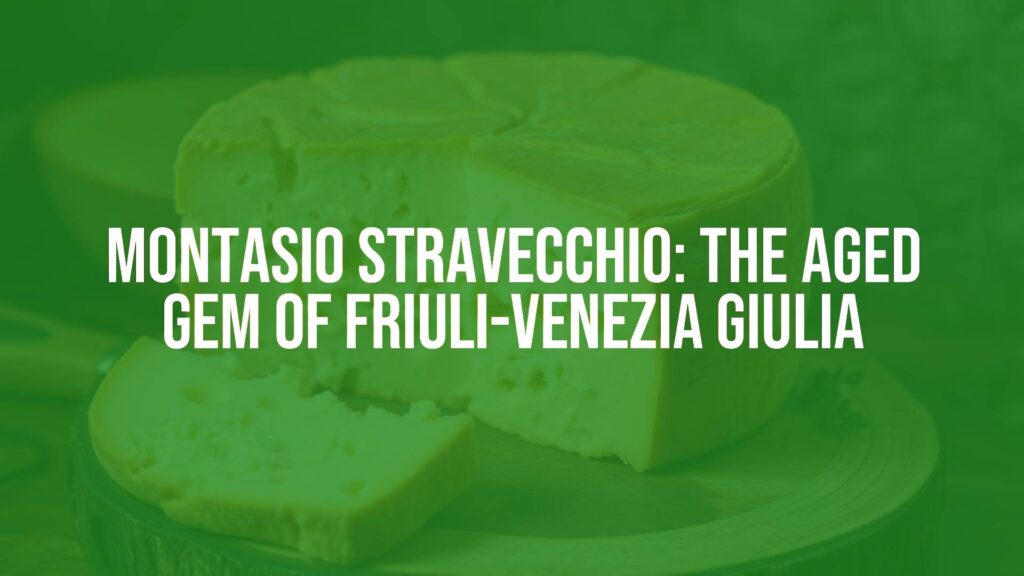Discovering Montasio Stravecchio
Montasio stravecchio is a celebrated Italian cheese hailing from the northeastern region of Friuli-Venezia Giulia and parts of Veneto. The ‘stravecchio’ designation identifies Montasio that has been matured for more than 18 months—sometimes even approaching or surpassing 24 months—endowing it with distinctive depth, complexity, and a firm, crystalline texture that sets it apart from younger versions.
What Sets Montasio Stravecchio Apart?
Montasio’s journey from a mild, semi-soft cheese (fresco) to the nuanced, robust stravecchio is defined by time. During this extended aging process, the cheese develops a golden, slightly brown rind, while the interior turns from pale straw to a richer, deeper hue. Its texture grows crumbly and granular, yet remains pleasantly melt-in-the-mouth. Flavors intensify, offering a lingering nuttiness, hints of toasted hazelnut, dried fruit, and a subtle piquant sharpness, finishing with a savory umami note. The cheese’s signature tiny crystals—formed from broken-down proteins—add to the satisfying mouthfeel.
Historical Context and Origins
Montasio has deep roots that stretch back to at least the 13th century, originating in Alpine dairy practices at the Abbey of Moggio Udinese. Over the centuries, Montasio became integral to local agricultural economies and culinary traditions. The ‘stravecchio’ style owes its existence to the ancient need to preserve cheese for leaner months: extra aging not only extended shelf life but also concentrated flavor and improved culinary versatility. Today, Montasio enjoys DOP (Denominazione d’Origine Protetta) protection, safeguarding its traditional methods and regional identity.
Production and Maturation
The making of Montasio stravecchio starts with high-quality, partially skimmed cow’s milk, often collected from mountain pastures. After curdling, the curds are set in characteristic wheel molds, pressed, and salted. What differentiates the stravecchio is its lengthy, carefully controlled aging in cool cellars, where it is regularly turned, cleaned, and monitored. This patient maturation is key to developing its singular characteristics.
Culinary Importance and Pairings
Montasio stravecchio is a prized ingredient in kitchens where bold flavor and texture are desired. Its crumbly body makes it ideal for grating over polenta, risotti, and hearty soups. Traditionally, it’s enjoyed in slivers alongside prosciutto, salami, or rustic bread—a perfect starter or component on an antipasto board. The cheese also pairs beautifully with full-bodied red wines such as Refosco or Merlot, as well as aged Friulian whites. For a regional touch, savor it with a sip of Friulano or a glass of Ramandolo dessert wine. Honey, walnuts, and pears are classic accompaniments that enhance its nutty notes.
Cultural Significance and Serving Suggestions
Montasio stravecchio stands as a symbol of Friulian culinary heritage and artisanal craft. It often features in celebratory meals and festive gatherings, cut into wedges or grated over traditional pasta dishes. Enthusiasts suggest serving it at room temperature to appreciate its bouquet fully, and cutting it into rustic shards to highlight its crystalline texture. To further elevate its flavors, allow a small piece to rest on the tongue—the nuanced development of taste is part of the cheese’s allure.
Varieties and Related Cheeses
While ‘stravecchio’ is the most matured expression, Montasio is also enjoyed at younger, milder stages: ‘fresco’ (aged around 2 months) and ‘mezzano’ (over 4 months). Each maturation milestone offers a unique profile suited for different dishes and occasions. However, the stravecchio remains the ultimate testament to the mastery of time and tradition in Italian cheesemaking.

